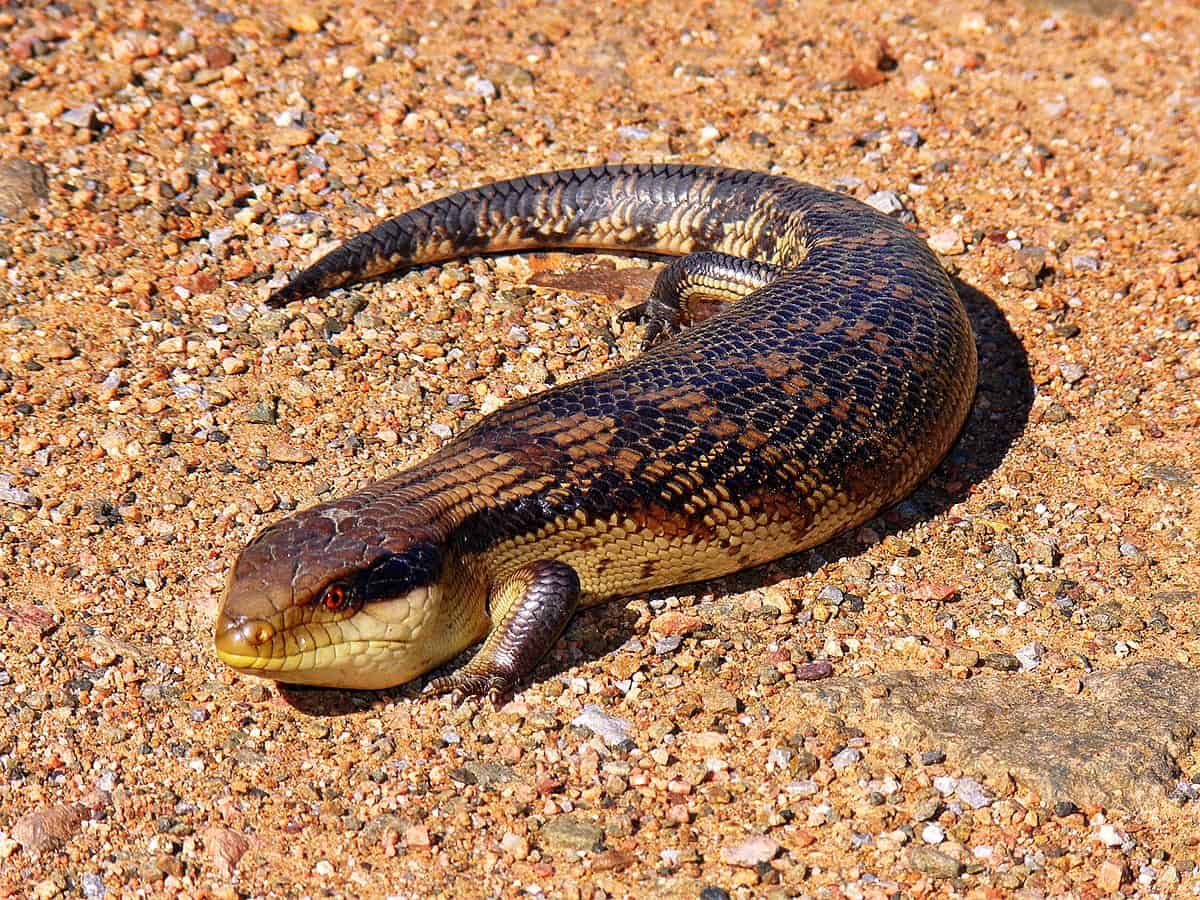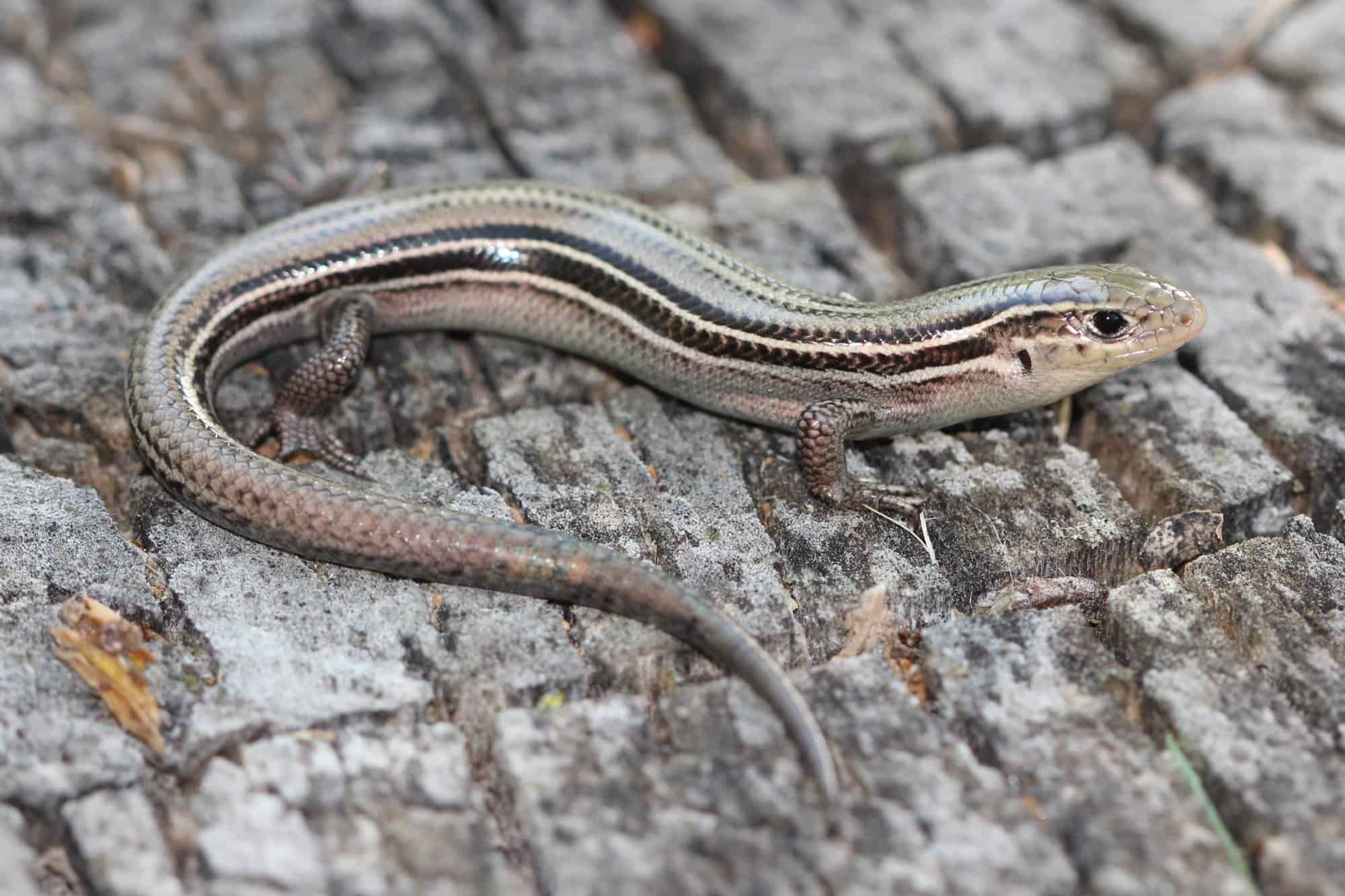Can I Feed My Skink Dead Crickets
If you like to spend warm summer days out in nature, you probably noticed an unusual creature that looks like a hybrid between lizard and snake. You were probably worried about whether they are dangerous for humans and pets, so you tried to stay away.
The animal you saw is a skink, a type of lizard that often gets confused for a snake because of its short or non-existent legs and lack of pronounced neck that would separate the head from the rest of the body.
Despite their snake-like appearance, skinks aren't dangerous at all, and some species are even kept as pets. However, to successfully keep a skink as a pet, one should do a bit of research beforehand. Here is everything you need to know about these animals:
What Are Skinks?
Skinks are a family of lizards with short or no legs, cone-shaped heads, and necks that have the same width as the heads. This, along with their long, cylindrical bodies, makes skinks look more like snakes than lizards.
Their size may vary depending on the species. Some skink species are approximately 3 inches long, while others can reach a length of more than 1 foot.
Habitats
There are over 1500 skink species, living in various habitats all around the globe, except in Antarctica. They live in tall grass, on trees, under leaves, stones, and logs, or they dig burrows in the ground to hide from predators and harsh weather conditions.
Activity
These animals are active during the day when they hunt for food or simply lay on the rocks to absorb as much sun's heat as possible. Skinks that live in moderate climates go through brumation during the autumn and winter months.
Brumation in reptiles is somewhat similar to hibernation in mammals. The only difference is that skinks move occasionally during their brumation to drink water or eat. Still, the amount of water and food taken during the brumation is minimal.
Reproduction
The reproduction of skinks is quite interesting. Approximately 55% of skink species are oviparous, which means they lay their eggs in nests and guard them until the young ones hatch. Some of the egg-laying skinks lay their eggs in communal nests that can hold dozens of eggs.
The other 45%, on the other hand, are viviparous. This means that the offspring develops inside its mother's body until it is fully developed and ready to be born.
One small percentage of skink species is ovoviviparous. They still "lay" their eggs, but those eggs remain inside the female specimen's body until the offspring is ready to hatch.
Fun Facts
Some species of skinks have green blood due to the buildup of a waste product called biliverdin.
Most skinks are capable of shedding and regrowing their tails when attacked by predators. Once they shed their tail, the new one will grow in 6 months to 1 year, but it will never be as long as the first one. Skink species that have stump tails can't regrow them.
After the geckos, skinks are the second largest group of lizards. A skink's lifespan can range from 5 to 20 years, depending on the species and whether it is kept as a pet or lives in the wild.
Since they have serpent-like bodies, many skink species move in a similar way to snakes, because their legs are either too short or non-existent to walk. However, arboreal skink species that live in the trees often have longer legs and they walk like other lizards.
What Do Skinks Eat?

Skinks are omnivores that will eat anything from insects, mollusks, small mammals, fruits, and vegetables. Skinks are mostly insectivores, which means they feed on insects almost exclusively, but they are also flexible when it comes to food and will eat something else when they can't catch an insect.
What Do Skinks Eat In The Wild?
Wild skinks love eating crickets, grasshoppers, beetles, slugs, snails, caterpillars, cockroaches, centipedes, millipedes, mosquitos, spiders, moths, locusts, termites, and even dead insects.
When they can't catch live insects or find the already dead ones, skinks will switch to a plant-based diet. They aren't too picky when it comes to plant-based food either, and they will eat various fruits and vegetables, such as carrots, strawberries, papaya, pumpkin, raspberries, bananas, arugula, dandelion greens, cabbage, blueberries, watermelon, cherries, basil, etc.
Feeding habits may differ greatly between various skink species because skinks that have longer legs are in general more capable of hunting their food, while the snake-like skinks can't always rely upon their movement to catch the prey. The location with its specific climate, food resources, and other factors can also influence the skinks' feeding habits.
Hunting For Food
Sinks hunt their prey by using their strong sense of smell to detect the chemical traces left by insects. By following these traces, skinks quickly catch up on their prey.
Another way skinks can identify their prey is by detecting ground-borne vibrations caused by worms and insects. They also use this skill to distinguish whether the vibration was caused by possible prey or predators.
Skinks also look for their prey by inspecting various crevices and holes where insects and other small animals could hide.
What Do Skinks Eat In The Captivity?
Skinks kept in captivity should be fed a diet that closely resembles their natural diet. However, it may not always be easy to replicate their original diet, especially if the skink in question originated from a place where it ate things that are not often found in other parts of the world. For instance, if you live in a region with a mild climate, it might be impossible for you to feed a tropical skink its regular food.
Fortunately, you can feed those skinks with some common foods, such as crickets, leafy greens, pinkie mice, mealworms, collard greens, peas, green beans, Brussel sprouts, turnip, kale, beef meat, turkey meat, mango, and even some brands of cat food/dog food.
Still, whenever possible, try to include insects in your pet's diet as often as possible, because it is their natural food after all, and they will thrive the best when properly fed.
What Do The Baby Skinks eat?
Juvenile skinks eat similar foods as the adult ones, although they eat smaller amounts and need to be fed more often.
Food Competition
Although skinks have a wide array of foods they can eat, they also need to race against competition. When it comes to food, skink's main competitors are other insectivores and fruit eaters, such as birds and rodents.
What Predators Eat Skinks?

Apart from its speed, shedding its tail is the only survival tactic that one skink possesses when faced with danger. That makes skinks highly vulnerable to various predators, such as snakes, owls, foxes, hawks, domestic dogs and cats, robins, vultures, and even other skinks.
Humans often kill skinks because they mistake them for snakes. This made some skink species endangered or even near extinct.
Do Skinks Make Good Pets?
Skinks are low-maintenance and really easy to care for, which makes them a good pet choice. They are rarely aggressive unless they feel threatened. If that happens, they can resort to biting. Fortunately, their bites aren't venomous, but they can still be painful.
In general, skinks are gentle and docile, with some of them actually enjoying being petted on their heads. They rarely have major health issues, and they don't require any special grooming.
Tips For Buying A Skink Pet
If you decided to get a skink pet, make sure to buy it from a reputable seller. Before making the purchase, carefully observe the specimen. It should have clear eyes and blemish-free skin with no dry patches or signs of incomplete shedding.
If the animal is lethargic, limps, has no appetite, or has some visible deformities, don't buy it because it has some underlying health conditions you don't want to deal with.
Of course, when you already own a pet skink and you notice some signs of illness, you shouldn't neglect or get rid of it. When in doubt about what to do, seek professional help.
How to Feed Skinks?

Feed your adult pet skink every 1 or 2 days. If you own a baby skink feed it at least once or twice a day. Avoid feeding your pet skink with citrus fruits and fish.
To make sure your pet skink gets all of the necessary nutrients, including protein, vitamins, and minerals, consider enriching its food with supplements. Every now and then, sprinkle its food with bone meal powder. This will make sure that your pet gets enough calcium.
Conclusion
If you are a big fan of reptile pets, skinks are perfect animals for you. They will eat almost anything you give them. Skinks are low maintenance and will pose no danger to you or your children. Most of the time, they are docile and show no signs of aggression.
There are many skink species out there, and you can choose which one suits you the best. If you have any questions regarding skinks and their care, feel free to ask them in the comment section!
valerioinglacrievor.blogspot.com
Source: https://www.atshq.org/what-do-skinks-eat/
0 Response to "Can I Feed My Skink Dead Crickets"
Post a Comment